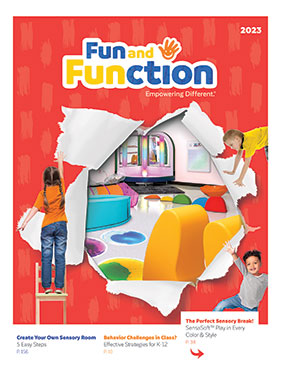As a special education teacher, nothing could strike a cold bolt of fear into my heart like a fire drill. Everything about fire drills was stressful for my students with autism, from the disruption in routine to the loud, piercing noise. My first few fire drills as a novice, first-year teacher still give me the shivers. Fortunately, fire drills don't need to be so uncomfortable for our students. A little planning and an hour or so of preparation are all you need to put together a great fire drill plan.
1. Make a binder. Heaven knows special education teachers have plenty of binders, but this will be a binder you actually use! I always used red, so it was easy to see, and printed a label for the spine with FIRE DRILL in all caps. Inside, have a list of family/caregiver contact information, any important medical information on students and a current class list. I also used a zipper pocket with binder holes to store a few fidgets in case outside waiting time got to be too much for any of the kids.
2. Make a picture-based "Fire Drill Instructions" card. Using your favorite picture symbol software, outline each of the steps involved in the fire drill. For example, the first picture might show the loud noise, then students getting in line, then walking quietly down the hall and gathering in the safe spot outside. Instead of using picture symbol software, you can also run a practice drill and photograph the students participating in each step. Photographs will help students who are not yet able to connect a symbol to an actual experience understand what's happening, and can be reassuring to any child who is frightened or panicked during an actual fire drill.
3. Practice! Knowing what to do in a fire drill was one of the first skills I focused on each school year, we practiced at least once a day for the first couple of weeks of school. We practiced in every possible location, from the cafeteria to the gym to the library, until each student mastered how to get out of the building safely.
4. Write down every single detail that can help someone who does not know your students get them to safety. Put it in the binder. Give a copy to special area teachers and the principal, as well as putting a copy in your substitute folder.
5. Have headphones on hand for students with extreme sensitivity to sound, and ask if the classroom can get a little advance notice of an upcoming drill. My principal would call our classroom ten minutes before a drill during the first month of school so we could prepare the students - after a few of those advanced warnings, they become comfortable enough with the drill process to handle unexpected drills like champs. I have met students who simply can't deal with the noise of a fire alarm due to sensory integration dysfunction, and for them headphones are a lifesaver. I kept a couple pairs on a plastic hook by the fire binder near the classroom door, my students who needed them could grab them at the first sign of the drill tone.
Fire drills can certainly be stressful to everyone, teachers and students included. Giving kids the tools they need to successfully navigate stressful situations is one of the things we do best - applying those same skills we teach each day to facilitating fire drills can make the entire process smoother for everyone.
Check out our noise reduction headphones for students to use.



















Comments